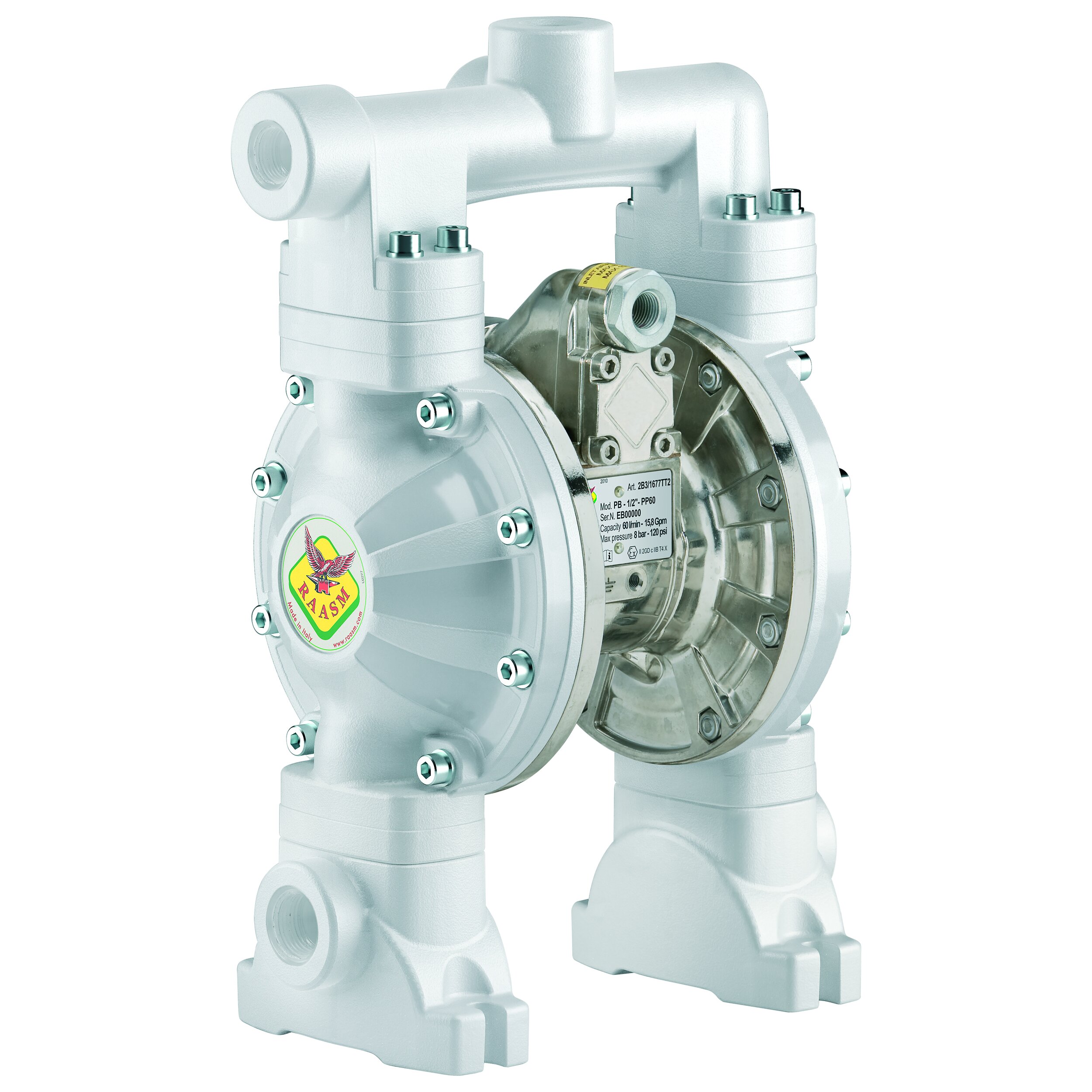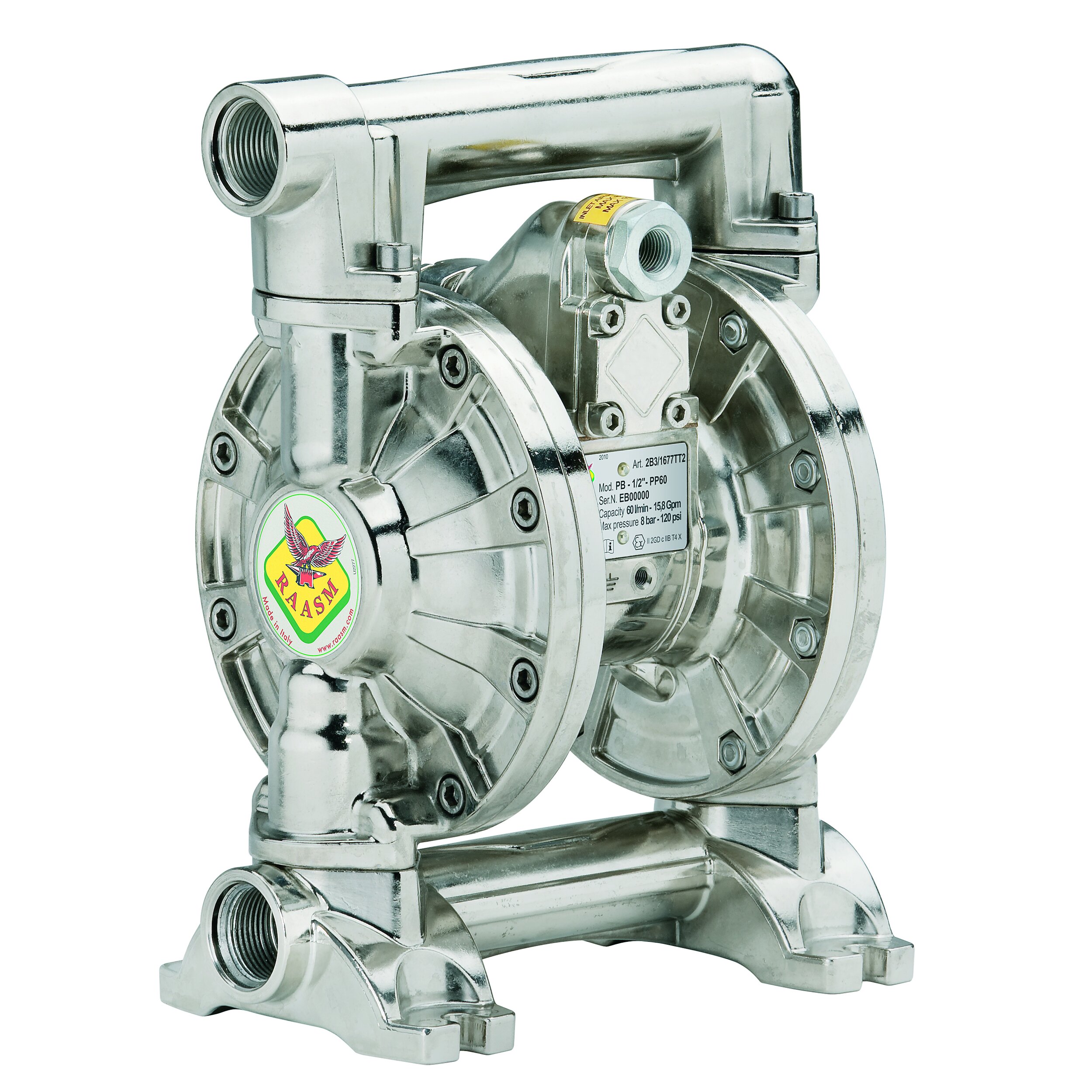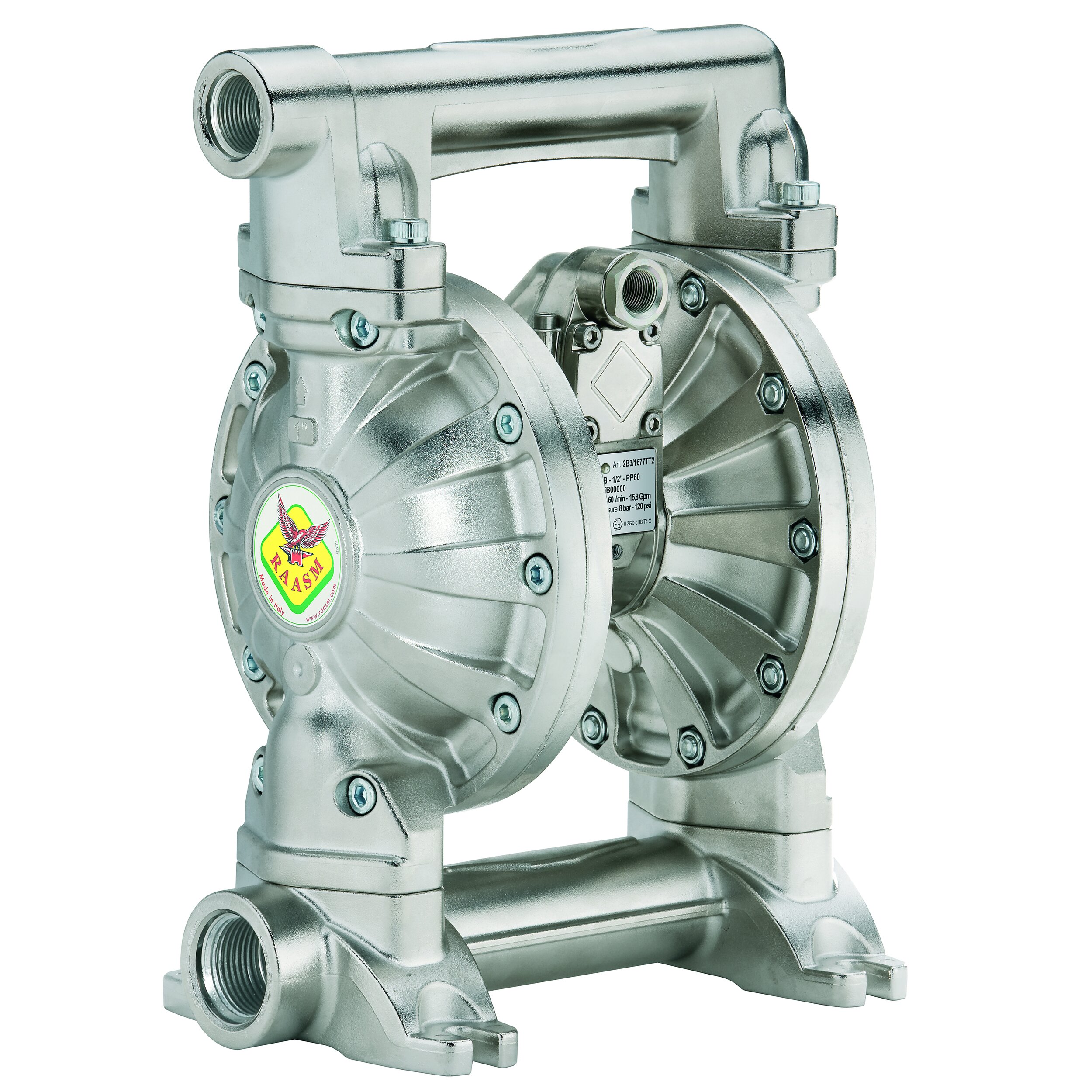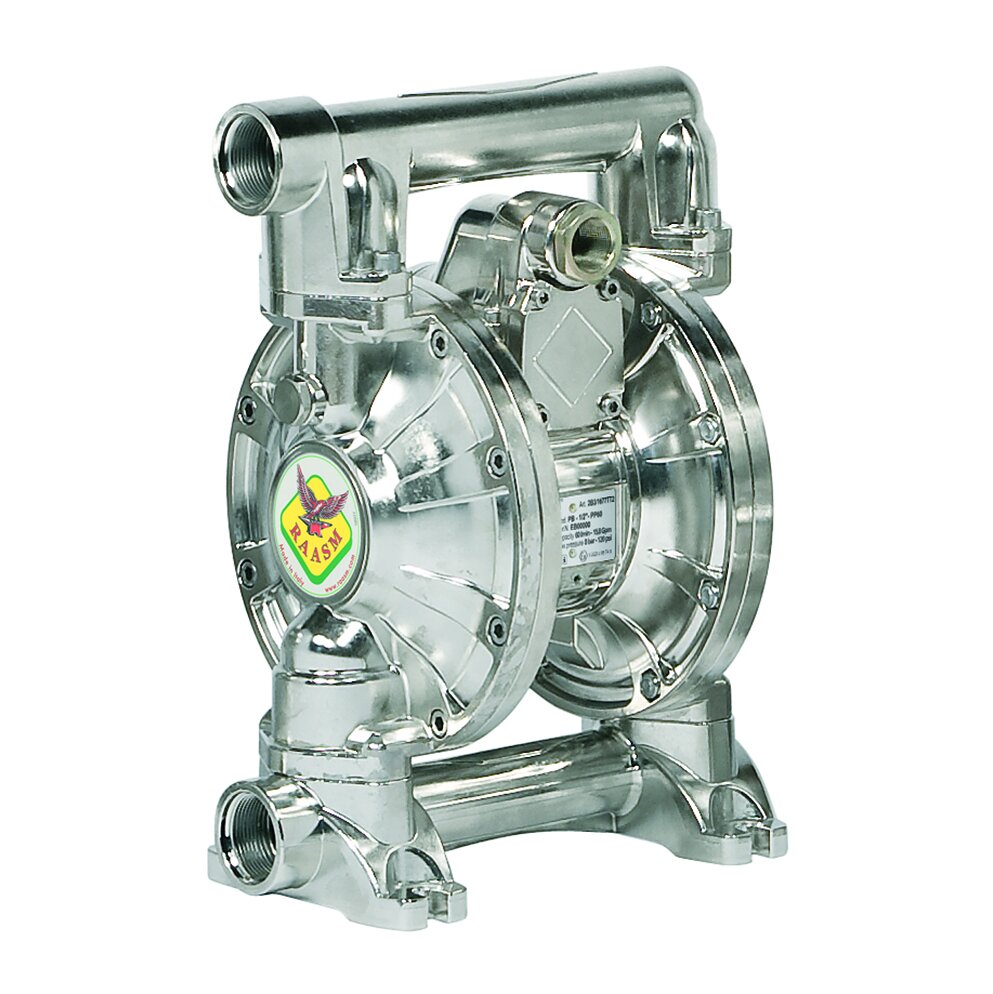How Do Diaphragm Pumps Work?
Diaphragm pumps are designed and manufactured for pumping a wide range of fluids even with high viscosities and with suspended solids. In being ATEX certified, they can also be used for heavy applications such as in places with high humidity or with potentially explosive atmosphere.
Unlike other types of pumps, the diaphragm pump for liquids has no limits to its use and can be adapted for dry running, mixed fluids, self-priming and even run submerged.
The Working Principle of a Diaphragm Pump
A double diaphragm is a positive displacement pump which utilises two flexible diaphragms that reciprocate back and forth, creating a temporary chamber, which both draws in and expels fluid through the pump. The diaphragms work as a separation wall between the air and the liquid.
The first stroke
The two diaphragms that are connected by a shaft through the centre section where the air valve is located. The purpose of the air valve is to direct the compressed air to the back of diaphragm number one causing it to move away from the centre section. The number one diaphragm causes a press stroke moving liquid out of the pump. At the same time diaphragm number two is performing a suction stroke. The air behind diaphragm number two is being pushed out to the atmosphere causing atmospheric pressure to push the liquid to the suction side. The suction ball valve is pushed away off its seat allowing the fluid to flow past the ball valve into the liquid chamber.
The second stroke
When the pressurised diaphragm number one has reached the end of its stroke, the movement of the air is switched from diaphragm number one to the back of diaphragm number two by the air valve. The compressed air pushes diaphragm number two away from the centre block resulting in diaphragm number one being pulled toward the centre block. In pump chamber number two the discharge ball valve is pushed off its seat, whilst in pump chamber number one the opposite occurs. Upon completion of the stroke the air valve leads the air again to the back of diaphragm number one and restarts the cycle.
Where Can Diaphragm Pumps Be Used?
Diaphragm pumps are a common site in many industries. There is an extensive number of construction materials available to produce a bewildering number of configurations to accommodate difficult fluids such as
Corrosive chemicals
Volatile solvents
Viscous, sticky fluids
Fluids with suspended solids
Dirty water and abrasive slurry
Smaller solids
Creams, gels and oils
Our range is suitable for:
2B8.16117NH5 - Maximum Solids Diameter: 1.5mm
33.2011NHHV2 - Maximum Solids Diameter: 1.5mm
33.2611NHHV2 - Maximum Solids Diameter: 3mm
3C1.40111NHH - Maximum Solids Diameter: 5.5mm





